When over 7 tonnes of chicken is discarded daily — the alarming scale of food waste in Asia
BY DERRICK A PAULO, RUTH SMALLEY AND CHRISTY YIP FIRST PUBLISHED IN CNA, 15 APR 2021
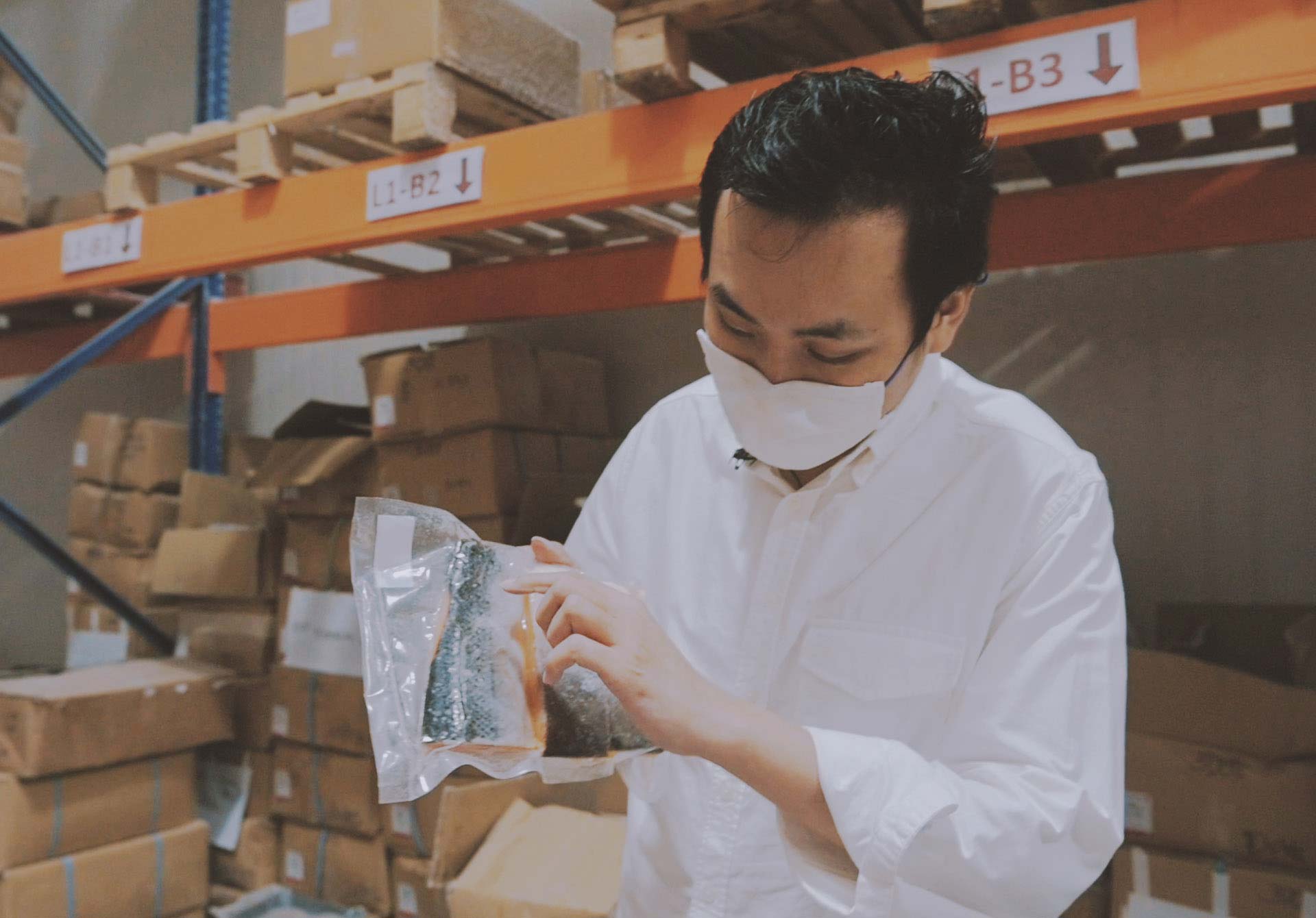
Cities in Asia are losing all kinds of food. And most of this wastage happens even before consumers can make their purchases. In a three-part series, CNA Insider, in partnership with DBS, hits the food trail for a deeper look at the problem - and the champions tackling it.
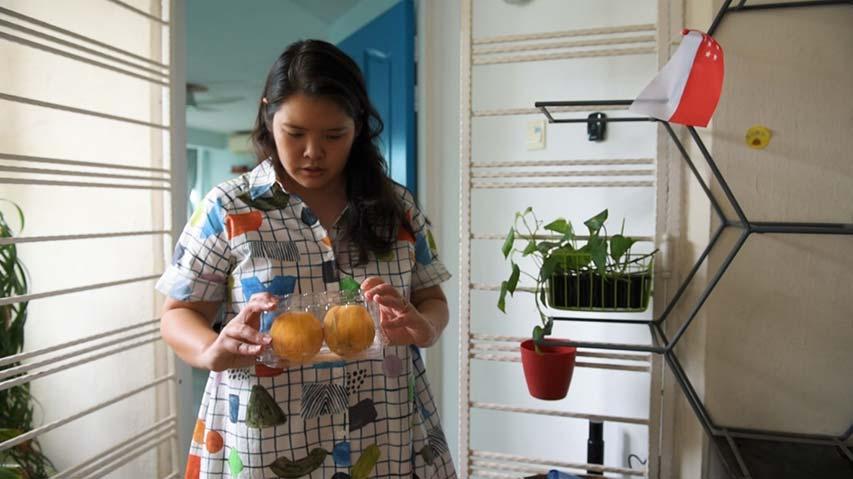
Bruised fruits? Beauty standards are a factor in food waste, but change is coming.
SINGAPORE: They would have made juicy chicken breasts, drumsticks, legs and wings, enough for hundreds of thousands of Singaporeans. But these chickens are not making it to your dinner plates.
Because that is the amount of chicken meat being wasted at slaughterhouses here — every day.
Social entrepreneur Nicholas Lim was shocked when he saw it with his own eyes, after a chicken supplier let him on a little-known market problem: The supplier was throwing away seven to 15 tonnes of perfectly good, usable chicken parts daily.
That is equivalent to 70,000 to 150,000 meals of chicken. And there are many more suppliers in Singapore — about 13 distributors supply more than 90 per cent of the fresh chicken products here.
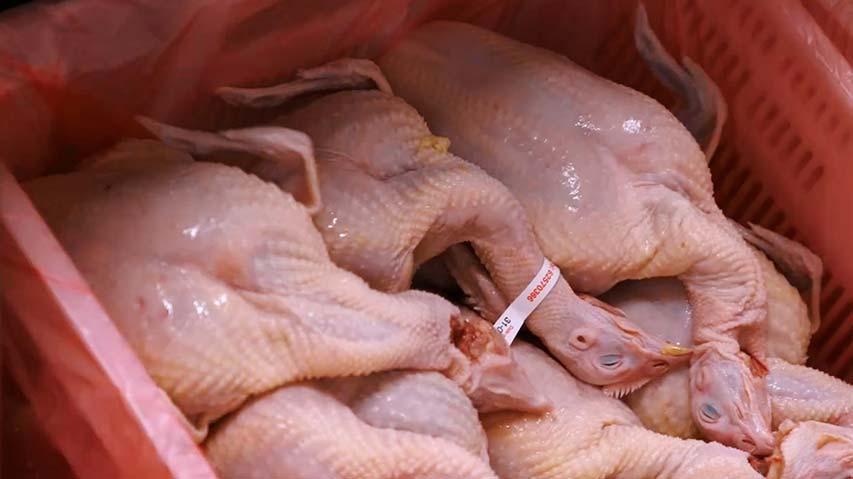
Tonnes of chickens like these are discarded daily.
“I was like, ‘How much money are you guys throwing away every single day?’” said Lim, co-founder of TreeDots, a start-up that redistributes food supplies.
“And then it hit me. It’s not just seven to 15 tonnes of food being wasted, but seven to 15 tonnes of lives that are being thrown away.”
It is happening not only to chickens either. Singapore, along with many cities in Asia, is losing all kinds of food.
In 2019, Singapore generated 744,000 tonnes of food waste, while more than half of global food wastage happens in Asia. Most of this happens before consumers buy their food, so all those resources used in food production are wasted too.
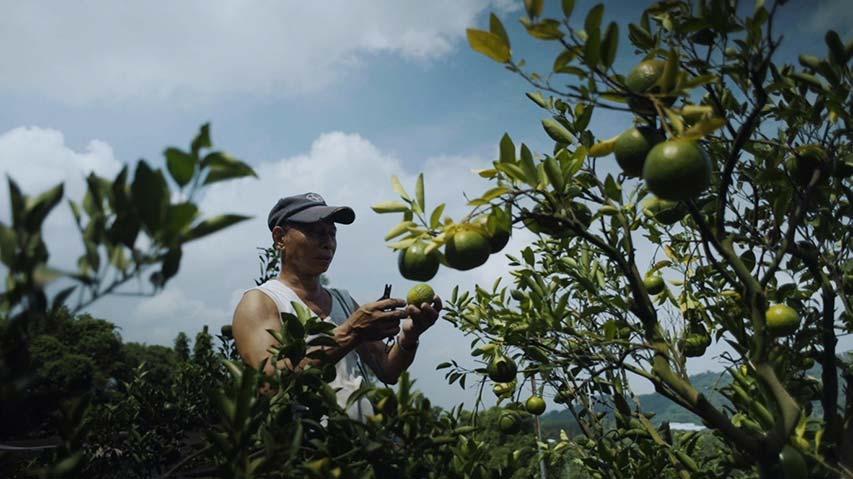
A farmer in Taiwan. A good amount of his efforts and resources used in his fields will go to waste.
In a three-part series, CNA Insider hits the regional food trail – from the retail and distribution stages all the way to the farms – for a deeper look at why these food supply problems exist, and the efforts on the ground in places like Indonesia, India, Taiwan, Hong Kong and Singapore to fight food waste.
And as it turns out, consumers can also help to ensure that more food becomes available for all instead of being lost.
BUFFER STOCKS
On the surface, there seems to be little risk of supermarkets here running out of food — an assurance given even at the height of the COVID-19 pandemic.
And to make sure of that — for example when it comes to fresh chicken — supermarkets and other retailers tend to contractually bind their suppliers to bring in a 10 to 20 per cent buffer stock daily, just in case.
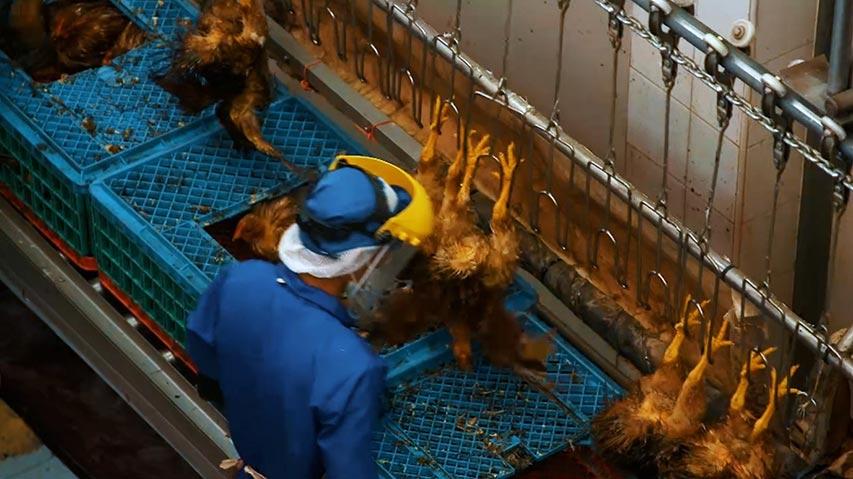
Singapore's fresh chicken supply rolls on.
These are live chickens imported from farms around the region and slaughtered here. But if there is no surge in consumer demand, retailers do not need to take the surplus stock.
“(Suppliers) try to sell it. If they can’t, they store it. If they store it for too long, they throw it (away),” said Lim, 28. “They need avenues to try and clear it every day … Storage space is expensive.”
Buffer stocks are thus one of the biggest contributors to food waste. While retailers do make sales projections, these are not 100 per cent accurate.
“In theory, if you’re 70 per cent accurate in your forecast, you’re considered very accurate already,” said Lim. This makes buffer stocks “the easier way out” compared to “trying to improve on the forecasting model”.
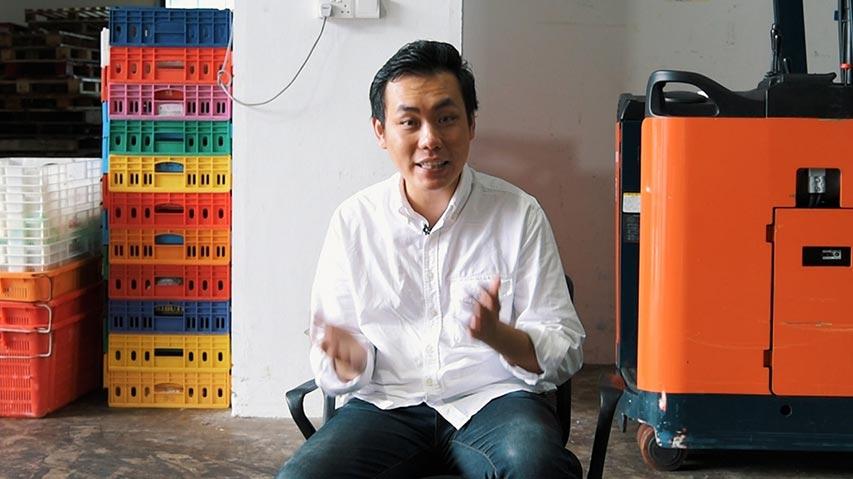
TreeDots co-founder Nicholas Lim.
“(Retailers) kind of need the buffer because households can’t stand the fact that certain common products are out of stock,” he added.
“For example, if I … want to buy a chicken whole leg, and if a supermarket doesn’t have chicken whole legs, it’ll cause quite a big fuss in the supermarket.”
If there is overstocking, on the other hand, there are “no repercussions” for retailers. The competition between suppliers means retail buyers call the shots.
“(A supplier) would rather have a buffer than have … a buyer go to another supplier,” Lim said. “The cost of lost sales is higher than the cost of buffer stocks or the disposal of buffer stocks.”
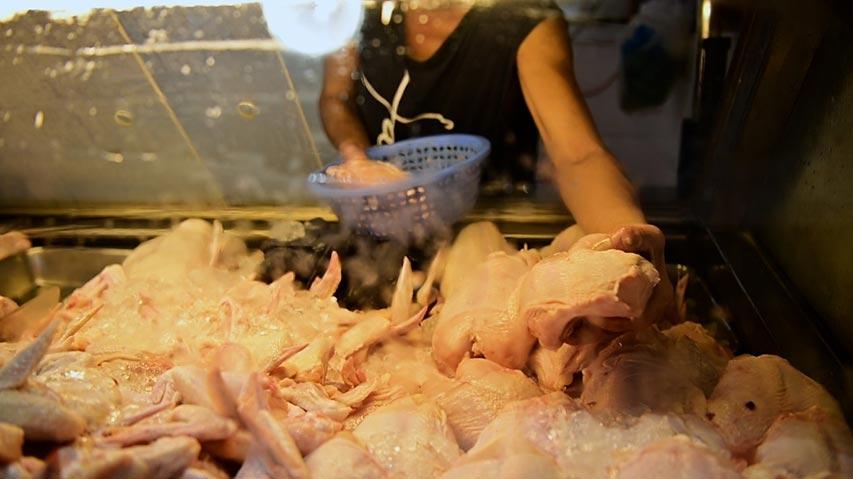
Retail buyers call the shots.
BEAUTY STANDARDS
Since 2018, Lim has been looking into the ways businesses generate meat waste in Singapore. And he found that these situations arise for reasons as simple as “cosmetic” filtering.
Even the weight of a chicken can determine what retailers sell or choose not to. The standard chicken size, for example, is 1.2kg. But “there’ll be situations where they’re just not the weight that’s stated” — either undersized or oversized.
“They can still be eaten, but simply because of cosmetic business requirements, they get lost in the end in the entire process chain,” he said.
Sometimes the chickens suffer broken bones or get bruises while being transported to Singapore. These are also rejected by buyers, in lockstep with consumer perception that “that’s not a normal chicken anymore”.
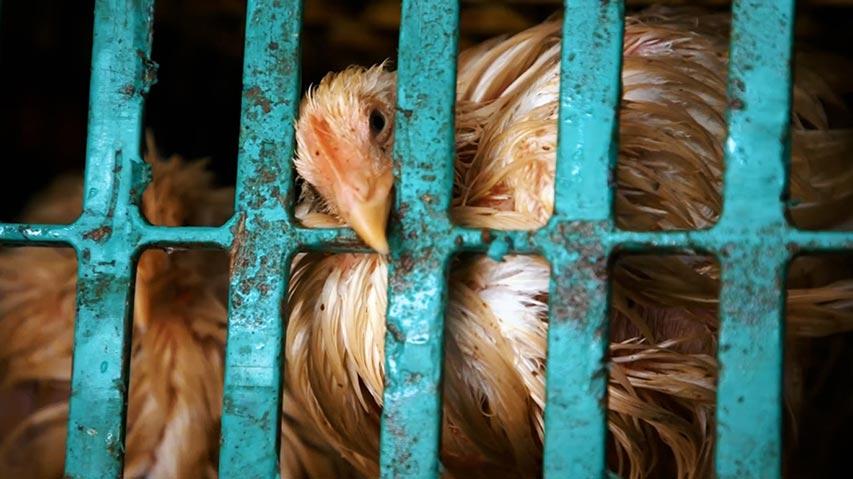
Destined for consumption, or waste?
“Because supermarkets have to display the nicest out there … this becomes your standard perception of how food should look,” he said, citing chicken rice stalls as another example that reinforces the idea of how “nice” food should look.
“But in reality, it’s not the case … When you catch a chicken to slaughter it, (it’s) going to struggle and … get injuries.”
Colour makes a difference too. For example, beef that is darker than the usual bright red, but of good quality and just as safe, does not normally make it to supermarket shelves.
Even centimetres matter, like in the case of mushrooms. Ban Choon Marketing, Singapore’s leading importer and wholesaler of fresh produce, has to measure the size of its mushroom heads because buyers are unwilling to accept uneven sizes.
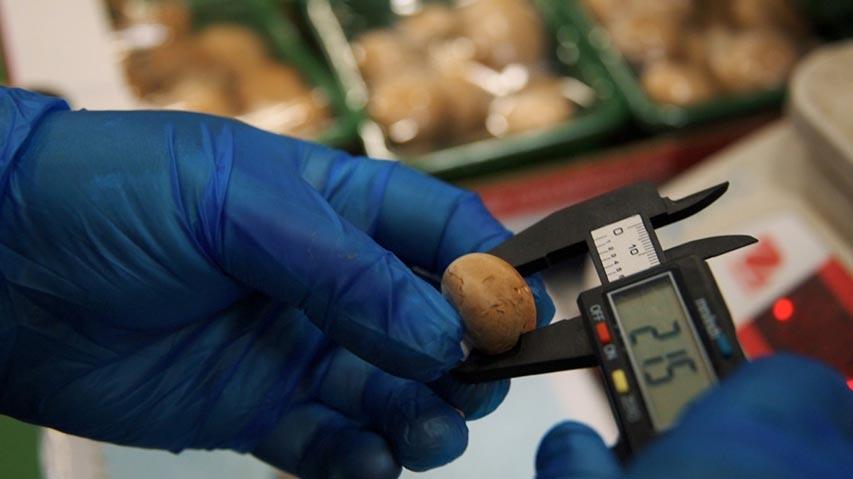
Measuring the size of mushrooms using vernier callipers to check if they are acceptably sized.
“I think it’s because consumers want the best when they pay,” said executive director Michelle Tan. “That trickles down to perhaps (our) customers being more stringent in their requirements.”
It also trickles down to farmers, who sometimes must go to great lengths to meet the expectations of retailers and consumers.
For example, Hou Chun Nan in Taiwan used to stick paper on his ponkan (a type of mandarin orange) to prevent skin discolouration, which happens if one side of the fruit is always exposed to direct sunlight while it is growing.
And if the skin colour of a fruit is uneven, it would be removed during the grading process. “It doesn’t sell well in the market because when we buy fruits, we tend to choose the prettier ones,” he noted.
WATCH: Why are we throwing away perfectly edible food?
NOT EXPIRED, BUT NOT USED
Food also tends to go to waste when it has passed half of its shelf life, even if there are six months to a year left before expiry. This affects dry products and processed foods, for example.
“If these products … aren’t moved at the rate that we’d agreed upon or a rate that we thought would be optimal, then that results in products sitting out here in our warehouse with less than that required period,” said Tan.
If the food is already on the shelves, retailers would typically return it, as consumers have a habit of buying food with the latest manufacturing date.
Chilled items, with a shorter shelf life, are particularly susceptible to wastage.
“We used to throw (away) 100 tubs of yoghurt … about 50kg of yoghurt whenever we had issues with flight delays,” said Hay Shiwei, the founder and director of food distributor Atasco, which focuses on supplying online grocers.
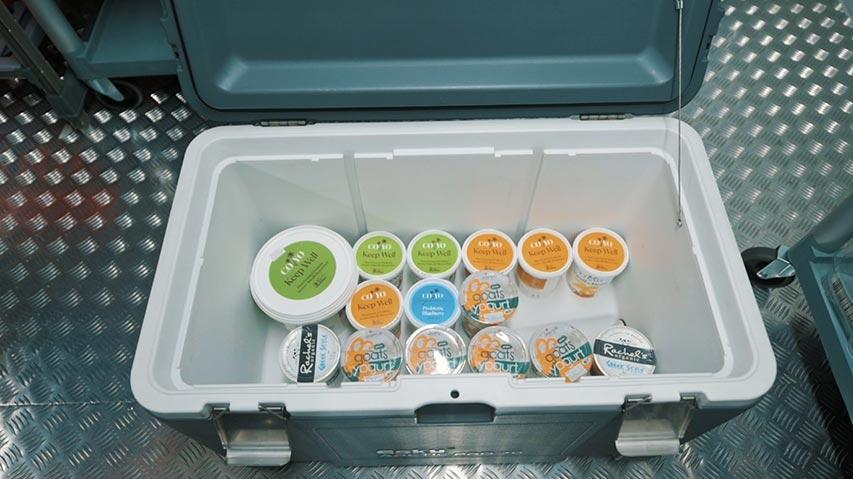
Some of the yoghurts that Atasco supplies.
Its organic yoghurts, for example, have a 14-day shelf life. “So when we list the items, whatever they buy has to have a minimum shelf life of eight days,” he cited.
“When (one) shipment was delayed for five days … we had only nine days of shelf life left when the product finally arrived in Singapore. So we only had one day to sell everything that we’d planned to sell for a week.”
In supermarkets, food such as milk is arranged accordingly, with items closer to their expiration date displayed at the front. But there are consumers who take the ones with a longer shelf life instead.
Retailers also return food that is approaching its best-before date, while some consumers do not know the difference between the best-before and use-by dates. The latter is the date after which the food must not be sold.
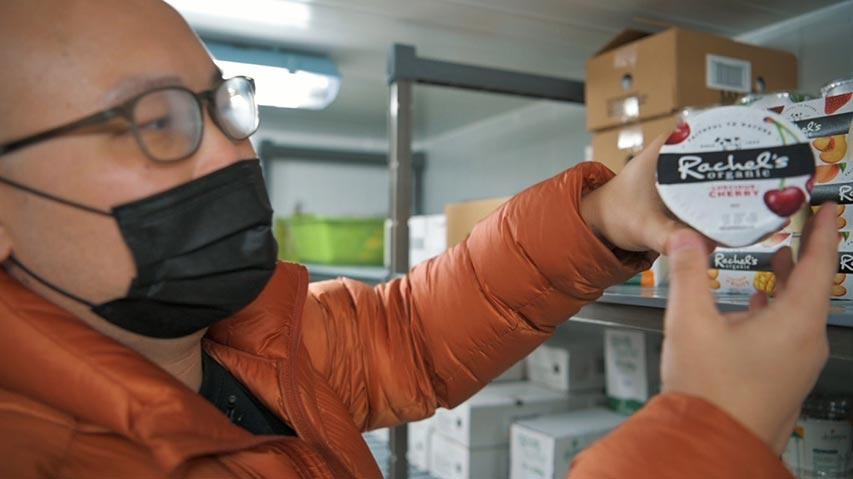
The best-before and expiry dates can pose a problem for Atasco in moving its goods.
“I’ve had lots of products way past their best-before dates, and they’re still very good for consumption,” noted Hay.
“So whenever there’s wastage, I’d think, ‘How am I going to use these products? In what way can I save them? Would anyone want them if I were to give them away?’”
REACHING OUT TO CONSUMERS
The 38-year-old found the answers in June 2019 when he discovered Treatsure, a mobile platform connecting suppliers and businesses like hotels that have surplus food to everyday consumers.
“Where we come in is as a secondary channel for them (companies) to start selling items that they couldn’t have (sold through) other channels,” said Preston Wong, the 31-year-old chief executive and lead innovator at Treatsure.
“Consumers see whatever there is (put up by suppliers), then they go about ordering as you would on an e-commerce platform.”
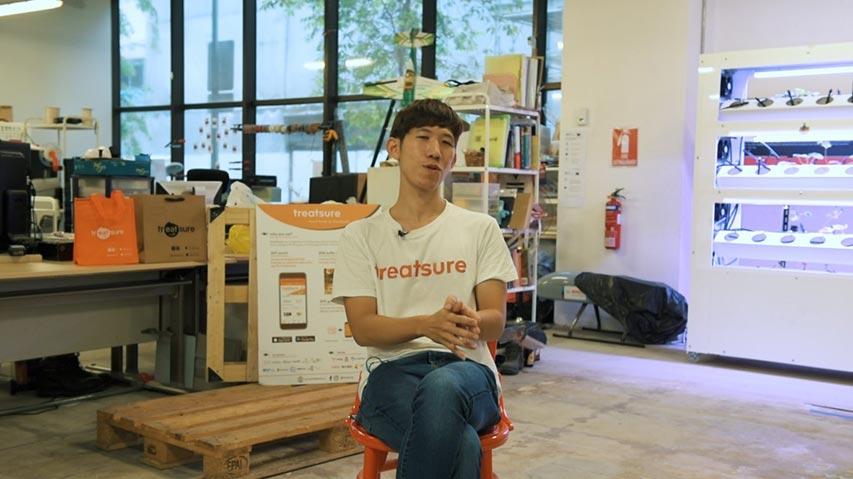
Preston Wong co-founded Treatsure in 2017
In the past year, the number of subscribers to Treatsure’s app has grown by three times and now stands at over 20,000 users who are seemingly not so fussed about food that comes with little dings or are nearing expiry.
They are saving not only food but also money, as Treatsure works out a “special rate” with its partners for their excess products.
In Hong Kong, a group of young people have gone even further.
The three founders of GreenPrice — who were university students when they started their social enterprise — have opened stores that sell nothing but near-expiry goods, also known as short-dated food. The goal: To change Hongkongers’ attitude towards these foods.
“They aren’t that willing to purchase items that are short-dated … thinking that the quality would’ve deteriorated,” cited GreenPrice co-founder Terence Hon, 23.
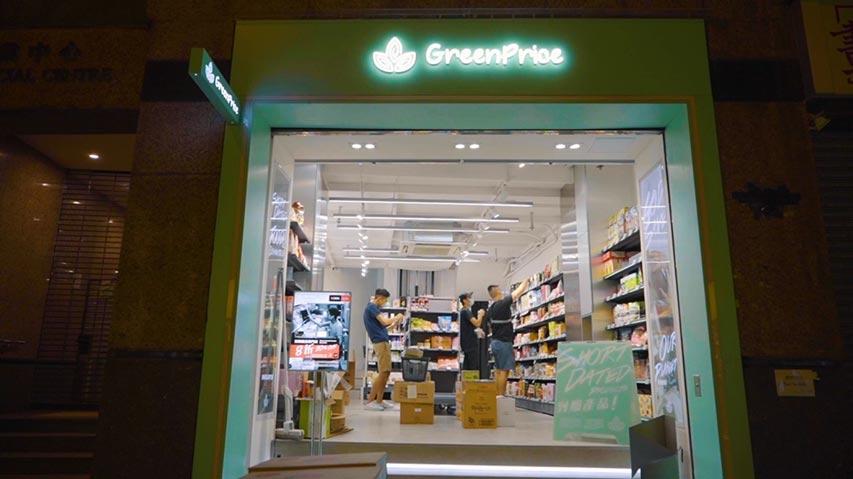
A GreenPrice shop front in Hong Kong.
This is why the young co-founders “put a lot of energy into developing stores” — to educate consumers about the different product labels with a little personal attention.
“Our staff usually go up to customers to introduce them to the best-before dates and the use-by dates,” said Hon.
“(We) even provide some samples for (customers) to taste the products … so that they can make the right decision and have confidence in short-dated items.”
That confidence is growing “bit by bit, year by year”. Based on consumers’ “acceptance” levels, GreenPrice sells food items that go up to three months past the best-before date.
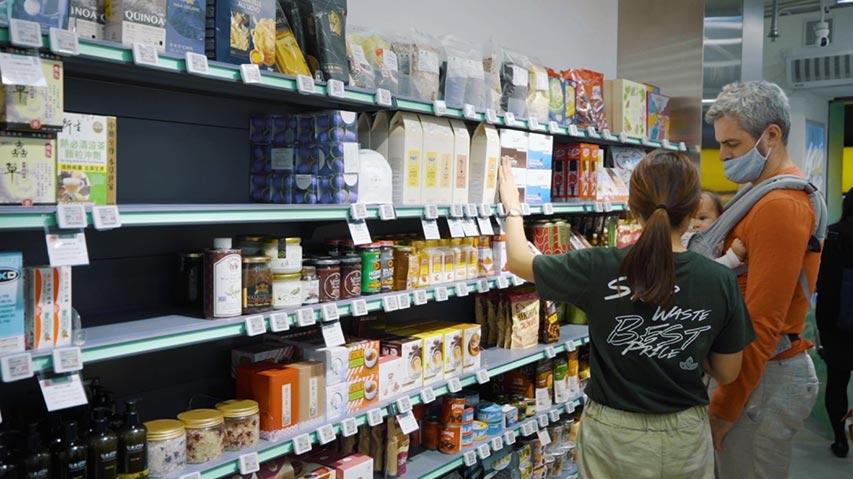
A GreenPrice employee in action.
Four years since its first store opened, GreenPrice has four stores now helping nearly 700 suppliers to sell these goods, mainly to younger, eco-conscious and white-collar customers.
UNWANTED NO MORE
Over in Taiwan, social enterprise Goodwill Foods is helping farmers to minimise food waste by increasing the use of “off-grade products” as much as possible, said co-founder Lin Ya Wen.
Hou is one of these farmers who sell the so-called “ugly” fruits in their harvest to Goodwill Foods, which turns them into jams for sale.
“This kind of ponkan is very suitable for the processing industry,” said Lin, explaining that the side of the orange more exposed to sunlight has less juice, which aids in the drying process.
“We tell the farmers directly that you just sell us the off-grade products that we need. Whatever price you want … we’ll accept.”
The jams are used by several food and beverage businesses, and doing so well that they have won awards. “As long as the products you’re making don’t rely on the fruit’s appearances, you can use these ‘ugly’ fruits,” Lin noted.
Goodwill Foods has also collaborated with DBS Bank and other “large companies in recent years” that have bought the social enterprise’s products, which include dried fruits and a soon-to-be-launched fruit beverage.
TreeDots is doing likewise in Singapore, by seeking out food businesses that are willing to buy unwanted, surplus meat and seafood. That includes animal parts that are less popular, such as chicken breast.
“When a supplier or slaughterhouse terms a product as ‘unpopular’, it’s because they don’t devote resources to look for that small, niche segment that these unpopular products could cater for,” said Lim.
“Healthier stalls, salad bars and stuff are more than happy to use fresh chicken breast … And all the gym people and (such) are happy to consume all this breast meat.”
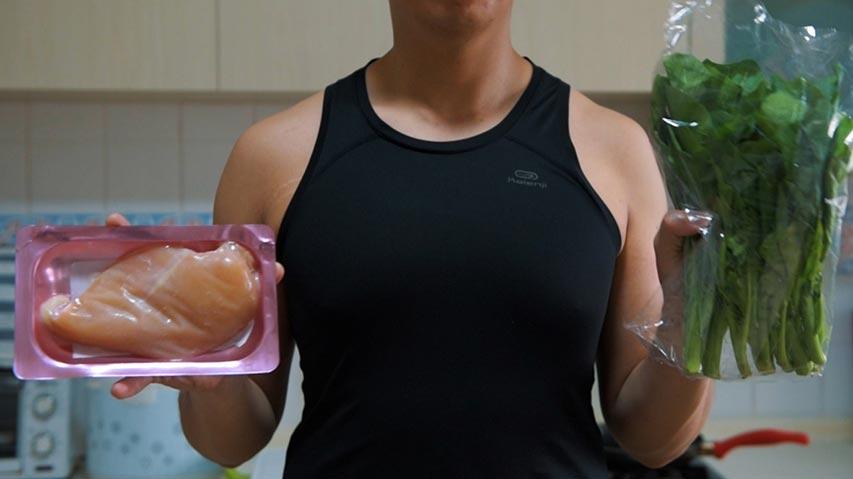
Gym diets are helping to reduce food waste.
TreeDots is now redistributing food to more than 1,300 businesses at bargain prices. Last year, it reached out directly to consumers too, and now has 82 group-buy communities who shop with it.
For example, Rachel Lum and her neighbours in their condominium buy their groceries in bulk every week, and do not mind a little imperfection in their food.
“We do this group buy so that everybody can enjoy the benefit of having cheaper prices of food,” she said.
TreeDots is also teaming up with The Food Bank Singapore and DBS to donate supplies to underprivileged families, with a separate app for this initiative in the pilot phase.
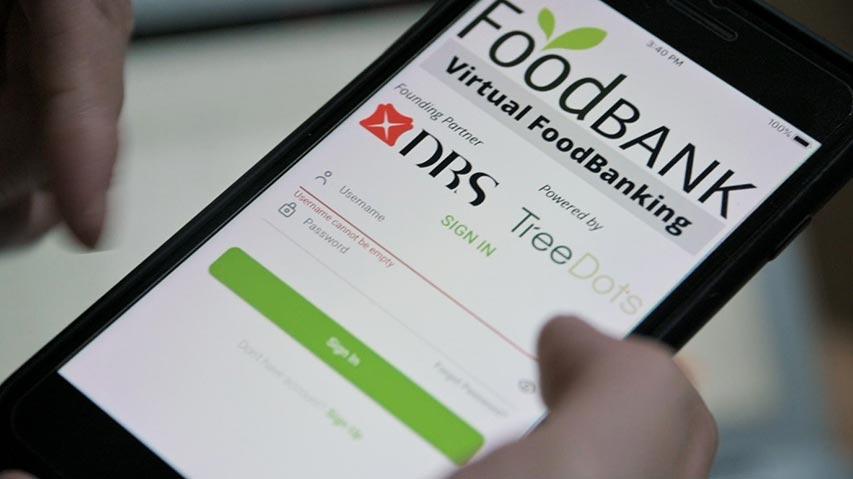
The pilot app.
TreeDots, Treatsure and GreenPrice are supported by DBS Foundation, while Goodwill Foods and The Food Bank Singapore are DBS community partners.
THE RIPPLE EFFECT
In the three years since TreeDots started, it has saved about 2,300 tonnes of food, or the equivalent of 23 million meals. Lim called this “a drop in the ocean” of food waste in Singapore.
“We’re not even near to clearing what the market requires us to,” he said, citing international estimates that 80 per cent of food waste comes from businesses.
He is “hopeful” about less food loss “because (he) can see the results of whatever we’ve done so far”. But he also knows that changing consumers’ perception is “not as easy as we thought”.
For instance, there are new TreeDots customers who ask why their chicken looks yellowish or has blood or feathers, or why their codfish has bones. Nonetheless, he treats these complaints as a “good” thing.
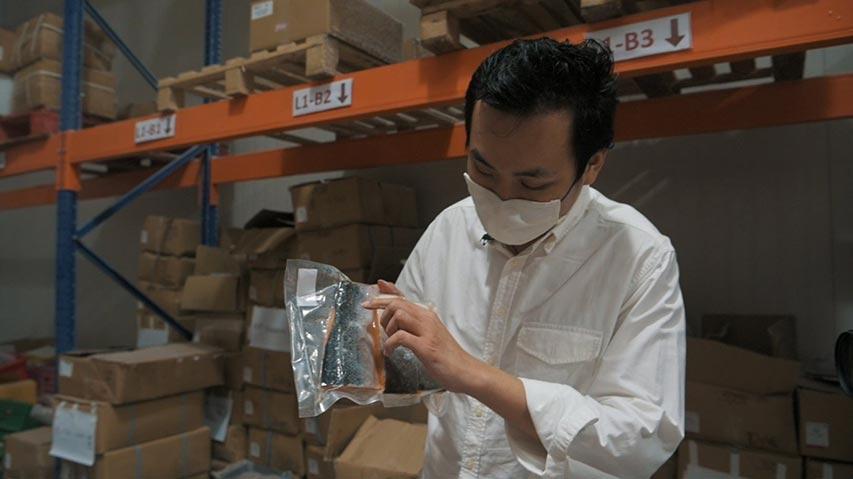
Lim with a rescued piece of salmon fillet deemed to be below Singaporeans' usual beauty standards.
“They raise (these questions) in group chats. So when we answer them, we see that as an opportunity to also educate everyone else in that particular group … There might be a ripple effect,” he said.
“They could tell their kids or their friends … that these products are okay.”
TreeDots is also gaining more reach by working with supermarkets like Hao Mart to have a segment of shelf space for the social enterprise’s non-cosmetically-filtered products, starting with red meat.
“We want people to start to recognise that this is an issue,” Lim said. “The root cause (of food loss) comes from demand that’s flawed … (The needle) won’t move if consumers are still demanding super perfect products.”
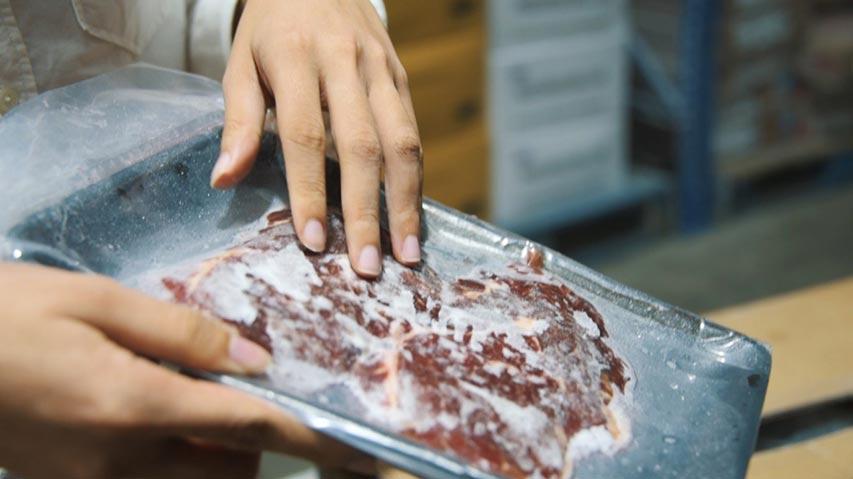
Some beef that has discoloured but is perfectly edible, according to TreeDots.
Consumers should also stop thinking that they cannot make an adequate impact as individuals, according to Singapore University of Social Sciences senior lecturer Tania Nagpaul. “People need to rise above these misgivings,” she said.
“Once they become a part of the solution, albeit a very small part of the solution, they begin to influence others and take others along with them.”
Echoing this, food waste expert and Hong Kong Baptist University assistant professor Daisy Tam said: “Consumers would say, well, supermarkets offer only these kind of choices. And then the supermarket says, well, consumers are only after these particular selections.
“So I think both have a responsibility.”
This article by CNA Insider was done in collaboration with DBS.
DBS Foundation provides holistic support to businesses of impact, including the flagship Social Enterprise Grant Programme. Applications for 2021 are open, click here to find out more.
Learn more about how you can continue your journey #TowardsZeroFoodWaste.
Find out more about DBS’ other partnerships and initiatives #TowardsZeroFoodWaste.